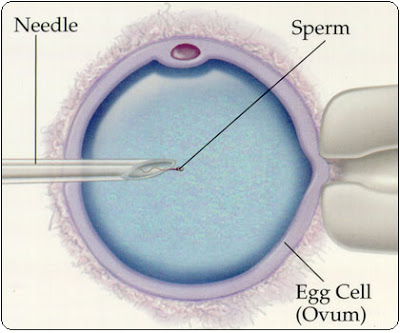THE LATEST INFERTILITY TREATMENT FOR MALE


The latest treatment in treating severe male infertility is Intracytoplasmic Morphologically-selected sperm injection (IMSI). It is superior to Intracytoplasmic Sperm Injection (ICSI) and Nordica Fertility Centre,Lagos spearheaded by Dr Abayomi Ajayi happens to be the only centre that has this equipment in the whole of West Africa for now. The technique involves selecting the best quality sperm cells from a sample provided by the male partner, and injecting them directly into the eggs retrieved from the female partner, thereby increasing the probability that these sperm cells will fertilize the eggs. Studies have found that IMSI improves on the successes of ICSI (Intracytoplasmic sperm injection).
ICSI, developed in the early 1990s, has itself been found to increase the chances of successful IVF. Study also reveals that men who have tried and failed to become fathers through at least two previous IVF attempts were twice as likely to succeed through IMSI as through another round of conventional fertility treatment.
In IVF, eggs are harvested from the female partner and left in a dish with sperm cells from the male partner. These sperm cells need to be strong enough (have good enough morphological quality) to swim to the eggs, penetrate their outer layers and fertilize them.
IMSI and ICSI do not rely on the sperm cells’ ability to do this – both techniques give the sperm cells a helping hand to reach the inner layer of the egg (the cytoplasm).
Where IMSI differs from ICSI, however, is that during IMSI, the embryologist carrying out the procedure uses an extremely high-powered microscope to select the sperm cells with the best morphological quality to be injected into the eggs.
IMSI begins with standard IVF procedure. The female partner is given ovulation-inducing drugs, and the resulting mature eggs are then harvested from her ovaries and prepared for fertilization in the laboratory. The embryologist will then use the high-powered microscope to examine the male partner’s semen sample. He then uses a long, thin, hollow needle to pick up the desired sperm cell. He holds the egg cell in a special pipette, and then uses the needle to push the sperm cell through the outer shell of the egg and into its inner area, where fertilization can take place. The eggs and sperm are then left for 24 hours, during with fertilization is likely to occur. If this is indeed what happens, the now fertilized eggs (embryos) are transferred back to the woman’s uterus where hopefully at least one will implant, resulting in a pregnancy.
This new technique appears promising and may offer the hope of improving the rates of pregnancy for selected infertile couples. Reports of the long-term outcomes from this study, including the healthy baby rate, will be needed, as well as an assessment of the cost and reproducibility of the technique in other countries.
- HOW TO DRESS LIKE PARISIAN WOMEN: ACHIEVING EFFORTLESS CHIC - August 14, 2024
- THE BRAVE ADVENTURE OF JOSH THE GREAT: A FAITH-FILLED JOURNEY OF COURAGE AND FORGIVENESS - August 14, 2024
- FASHION AND BEAUTY ICONS FROM AROUND THE WORLD - July 28, 2024




Ovulation induction: in this method the fertility drugs stimulate the follicle as a result of which multiple eggs are produced in one cycle. In fact the medicine used can also control the time when the eggs are released so that procedures like in vitro fertilization or even normal sexual intercourse can be scheduled. Though this is a popular method but there risks such as development of ovarian cyst or chances of multiple births are more probable via this. Clinic for Infertility treatment in Thailand